But those tides are becoming increasingly unpredictable. Recent economic actions by U.S. President Donald Trump, including sweeping import tariffs and growing international trade tensions, have heightened global market volatility and increased the risk of recession. In Brazil, growing economic rigidity was also felt on the ground.
For the second consecutive year, São Paulo’s lack of tax exemptions for art imports, largely due to state-level policy, appears to be setting a new norm. Meanwhile, a recently proposed tax reform could have significantly impacted the Brazilian art market had it not been for lobbying efforts to exclude art from being treated as a standard commercial product.
On another front, the tightening of Brazil’s resale royalty law (direito de sequencia) has created unease among galleries, many of whom now hesitate to officially declare sales for fear of retroactive claims by artist heirs. This atmosphere of legal and financial caution has further constrained the market.
The recent sale of Brenda Valansi’s stake in ArtRio, one of the country’s other major art fairs, also reflects the growing challenges of managing Brazil’s art infrastructure in an increasingly uncertain economic and legal environment.
While SP–Arte continues to stand as a solid and respected event in the Latin American art calendar, the ripple effects of international political and economic decisions are increasingly felt at the local level. Art acquisitions, often seen as strategic investments, are no longer approached with the same urgency as in past editions, when collectors rushed to secure a work before it disappeared. Today, buyers tend to be more analytical and deliberate, especially when purchases exceed R$500.000, reflecting a broader shift in market behavior and confidence.
Latitude Project Strengthens Global Ties for Brazilian Galleries
The Art Immersion Trip, an initiative of the Latitude project – a partnership between ApexBrasil and ABACT – brought three big names in US curating to experience the power of Brazilian art. Jorge Rivas (St. Louis Art Museum), Christian Ramirez (Phoenix Art Museum) and Jose Roca (Hirshhorn Museum) took part in an intense agenda beyond SP-Arte, including major museums, private collections, and artist studios — aiming to boost institutional ties and place Brazilian art firmly on the international radar.

Jorge Rivas, Christian Ramirez and Jose Roca
The fair also attracted influential figures from the global circuit, such as Malba’s Curator Rodrigo Moura, German Art dealer and Collector Alfred Kornfeld, Colombian Jose Roca which is Curator of Latin American Art at Hirshhorn Museum in Washington. A meeting of heavyweights around Brazilian production.
Sophie Su Art Advisory was present at the fair and closely followed the negotiations that moved the event. Find out in our exclusive behind-the-scenes report on SP-Arte 2025. Read it now and stay ahead of the market!
Contact us — let Sophie Su Art Advisory guide your next move in the art world.
Art Galeries
I. Secondary Market Galeries
Danielian
Danielian Galeria presented a curatorial selection that highlights the breadth of its collection, bringing together works from different periods and movements in Brazilian art. The stand offered a panorama that spanned modernism, concretism and contemporary art, revealing dialogues between established names and different visual languages.

Danielian Gallery’s booth
The participation resulted in important sales, including: a sculpture by Sérgio Camargo, a painting by Candido Portinari, a work by Djanira, as well as several pieces by Antonio Dias. The gallery’s highlight was the sale of the painting Aqueduto in Rio de Janeiro, c. 1816-17, Nicolas-Antoine Taunay, which had not been seen in public since the early 19th century.
The most valued works by Nicolas-Antoine Taunay in Brazil are those depicting idealized visions of the local landscape and people, crafted through a European neoclassical lens. These paintings are prized not only for their rarity but for their role in shaping Brazil’s early visual identity.

Nicolas-Antoine Taunay
O Aqueduto do Rio de Janeiro e a Rua Mata-Cavalos, c. 1816-1819
Oil on canvas
64 x 81 cm
Sold
Galatea
With a space that simulates the atmosphere of an apartment, where the works dialogue with signature furniture, including seven pieces from the collection created by Jimeno in partnership with Pali Cornelsen, the group makes a connection between art and architecture, reflecting on how the aesthetic experience manifests itself in the domestic environment.

Galatea Gallery’s booth view
With sales already surpassing R$12M — and an additional R$8M in reserved works — the gallery celebrates a remarkably successful edition. Highlights include three pieces by Allan Weber, four by Rubem Valentim, five by Mucki Botkay, and seven by Dani Cavalieri, along with individual acquisitions of works by Grauben do Monte Lima, José Adário, and Georgette Melhem.
One of the standout moments of the gallery was the sale of a major mural by Emiliano Di Cavalcanti, considered a true masterpiece. The exceptional work, which once adorned the lobby of the iconic Avenida Atlântica building in Rio de Janeiro, was sold during the VIP preview days. While the final sale price remains undisclosed, the asking price was reportedly R$8M.

Emiliano Di Cavalcanti
Untitled, 1969
Oil on canvas
277 x 231 x 5 cm (framed)
Sold
Gomide & Co
The gallery presents a selection that explores the relationship between Constructivism and geometric abstraction in Latin America, connecting pieces from the pre-Columbian Nazca and Moche cultures with works by contemporary artists.

Gomide & Co Gallery’s booth view
Gomide & Co has completed the sale of all of Julia Isidrez’s ceramics, which were exhibited alongside pre-Columbian sculptures in dialogue with her work. The gallery also confirmed the sale of a ceramic plate by Francisco Brennand and a concrete painting by Alfredo Volpi, with the buyers remaining confidential.

Alfredo Volpi
Untitled (Segmento de fachada), 1960
Tempera on cardboard
24 x 33 cm
Sold
Paulo Darzé
The gallery presents the exhibition Cartografias Luminosas, featuring works by four Brazilian artists: Amadeo Luciano Lorenzato, Aurelino dos Santos, J. Cunha, and Mirela Cabral. The selection creates a dialogue between different generations and artistic languages, with the presence of light in urban landscapes serving as the central point of connection.

Paulo Darzé Gallery’s booth
With strong sales results, the gallery sold four works by Amadeo Luciano Lorenzato, the larger pieces for R$450.000 and the smaller ones for R$300.000, as well as six paintings by Aurelino dos Santos. Mirela Cabral’s series of sculptures also stood out and was completely sold out.
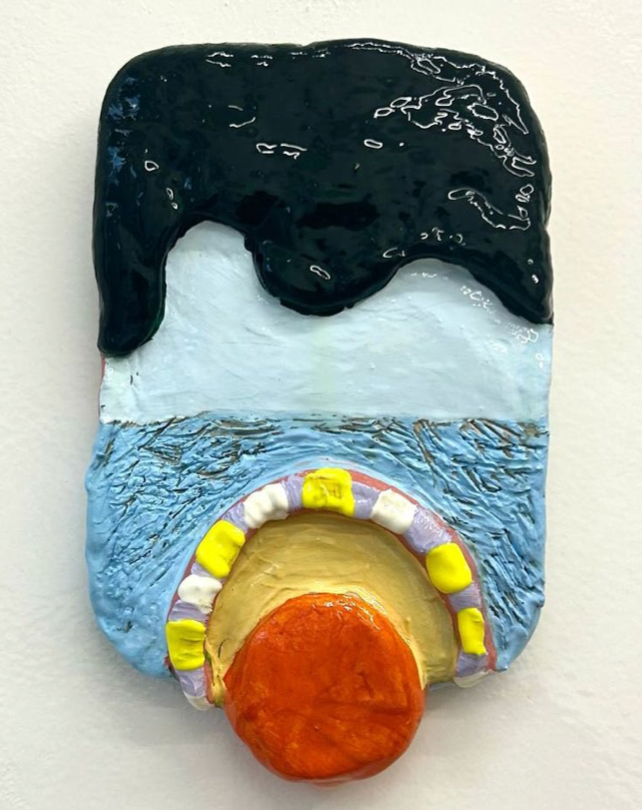
Mirela Cabral
Raio de sol, 2025
Cold ceramic, acrylic and varnish
15 x 10 cm
Superficie
Bringing a selection that balances historical and contemporary names, the presentation reflects the gallery’s performance in the market. Highlights include works by Mira Schendel, José Leonilson, Ana Amorim, and two pieces by Pedro Escosteguy, a central figure in the Brazilian avant-garde.
On Thursday, March 3, 2025, the gallery welcomed researcher Izabela Pucu to its headquarters for a talk on Public Art. The book Pedro Escosteguy – poesia, vanguarda e nova objetividade was also launched on the occasion, providing an unprecedented insight into the career of one of the leading names in Brazilian avant-garde art.

Superficie Gallery’s booth
The gallery has sold two gouaches by Maria Leontina and a portfolio by Carlos Vergara, and is currently in negotiations for works by Hélio Oiticica and Antonio Dias.
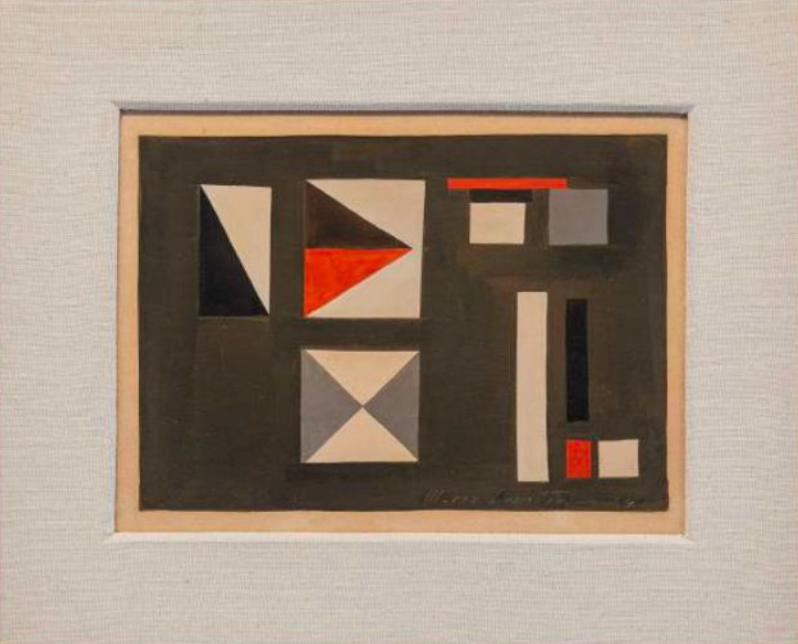
Maria Leontina
Untitled, 1995
Gouache on cardboard
18 x 24 cm
Sold

Carlos Vergara‘s album
Sold
Súr
For this edition of SP-Arte, the gallery is presenting a dialog between Afro-Brazilian and Afro-Uruguayan artists from different periods, highlighting the visual and conceptual interaction between their works. The curators also propose encounters between names such as Joaquín Torres García and Rubén Valentín, highlighting formal and thematic affinities.

Súr Gallery’s booth
Among the highlights are works by Pedro Figari, Juan Carlos Figari, José Antonio da Silva, Antonio da Silva and Madalena Reinbolt, currently featured in an exhibition at MoMA, is on view at the fair with a work priced at a asking price of $180.000. The gallery also reports two notable sales: one to Paris and another to a Brazilian collector.

Súr Gallery’s booth

Madalena Reinbolt, tapestry
Ricardo Von Brusky
The gallery’s selection highlights the richness of Brazilian folk art, bringing together artists who reinterpret ancestral techniques and explore natural materials. Sculpture, painting, and ceramics take center stage, bridging tradition and contemporary art through narratives of identity, religiosity, and daily life. Notable names include GTO, Miguel dos Santos, and Agnaldo dos Santos.

Ricardo Von Brusky Gallery’s booth view
The sale of a sculpture by Chico Tabibuia for R$120.000 and two ceramic pieces by Paraguayan artist Julia Isidrez for R$70.000 and R$28.000, one of which went to a German collection, was reported. In 2023, Julia held her first solo exhibition, La plasticidad de la memoria: el mundo de Julia, at the Centro Cultural del Lago in Paraguay, and took part in the 60th Venice Biennale.

Chico Tabibuia
Untitled, n.d
Wood sculpture
102 x 40 x 37 cm
Sold: R$120.000
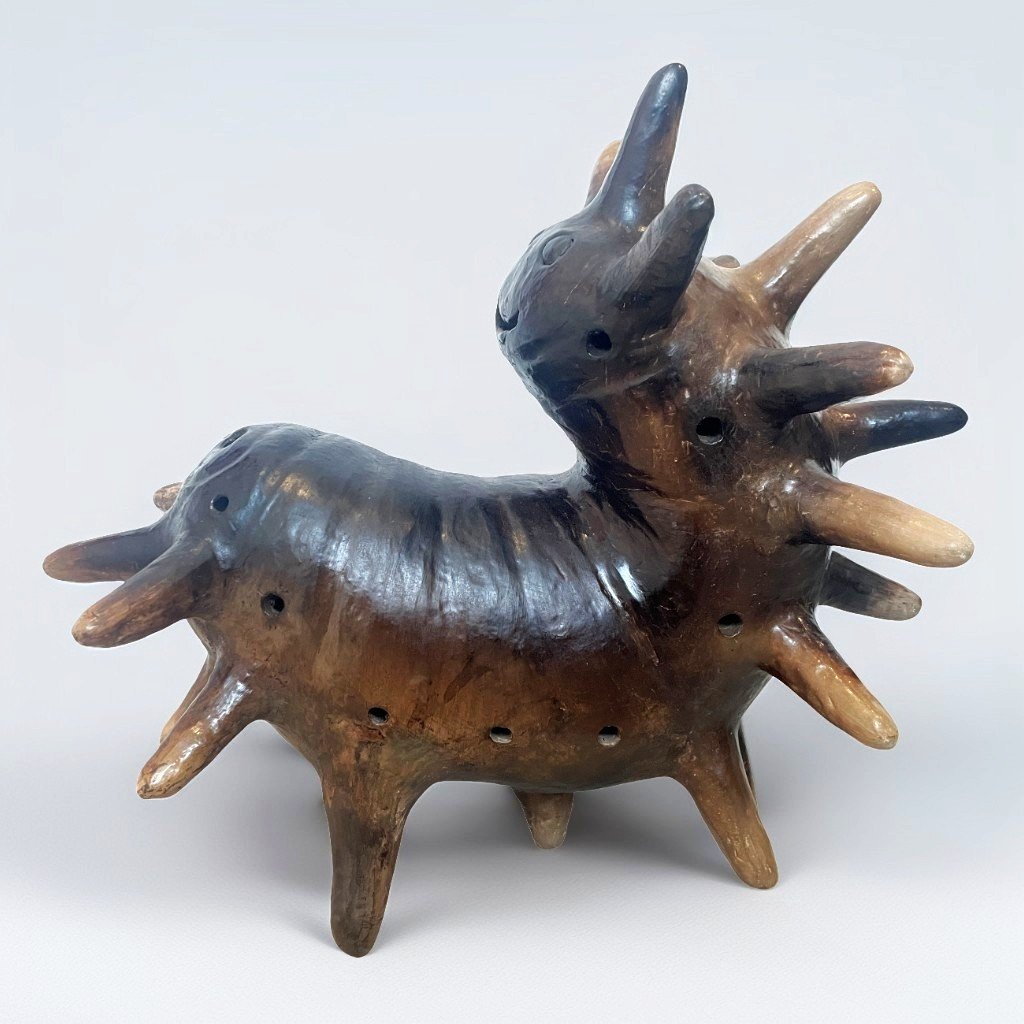
Julia Isidrez
Ciempies
Ceramic
47 x 51 x 32 cm
Sold: R$70.000
MaPa
The gallery explored the line as a central concept, unifying works by Loio-Pérsio, Mira Schendel, Eva Soban, Marcelo Reginato, Firmino Saldanha, and Sara Carone. On the first day, it recorded sales of small-value pieces.

MaPa Gallery’s booth view
Rafael Moraes
Gallery owner Rafael Moraes presented a special project featuring jewelry designed by Di Cavalcanti and crafted in the 1960s by French jeweler Lucien Finkelstein, accompanied by a set of exclusive drawings gifted by the artist to the jeweler.

Rafael Moraes Gallery’s booth
The jewelry, from the personal collection of Lucien Finkelstein — an avid collector and founder of the former Museu Internacional de Arte Naïf in Rio de Janeiro — was entirely sold on the first day of the fair.

Anel Penélope, 1960
Gold, enamel and diamonds
Pinakotheke
The gallery’s selection features a section dedicated to abstraction, presenting works by Joan Miró, Pierre Soulages, and Victor Vasarely in dialogue with Brazilian artists such as Abraham Palatnik, Barbante, and Bruno Giorgi. The curators emphasize the connections between these distinct trajectories, united by the power of form, color, and visual structure.

Pinakotheke Gallery’s booth
Celebrating its 120th anniversary, the gallery presents A Grande Queimada, 1963, a triptych by Antônio Bandeira that has never been exhibited before.

Antonio Bandeira
A Grande Queimada, 1963
Almeida & Dale
With a broad and thoughtful curatorial approach, the gallery presents a journey that highlights the richness of artistic languages, origins, and territories—bridging contemporary productions with iconic works of 20th-century Brazilian art. The booth celebrates the depth and diversity of the national art scene across time.
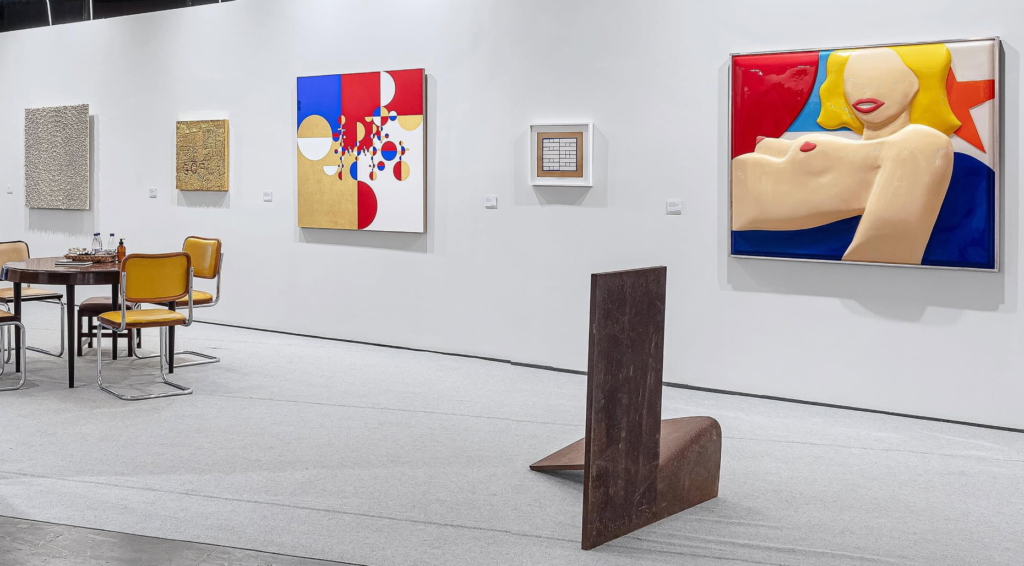
Almeida & Dale Gallery’s booth
Almeida Dale reported key sales during the fair, including works by Cícero Dias and Amílcar de Castro. Adding to the spotlight, the gallery also features a striking sculpture by Damien Hirst, valued at R$3.5M.
II. Contemporary Art Galleries
Nara Roesler
Nara Roesler presents a kinetic cube by Julio Le Parc, ahead of his major retrospective at Tate Modern in 2026. The gallery also features Fabio Miguez, Tomie Ohtake, and Karin Lambrecht, who are part of Five Essays on MASP: Geometries at MASP’s new venue, alongside Queer Histories, highlighting Rodolpho Parigi.
In an interview with SP-Arte, Daniel Roesler, partner at Galeria Nara Roesler, highlighted the gallery’s recent achievements on the international scene. A work by Tomie Ohtake has been incorporated into the collection of MoMA in New York. Sharjah Art Foundation, in the United Arab Emirates, acquired a work by Antônio Dias and inaugurated the artist’s first solo exhibition in the Middle East. José Dávila debuts his first major solo show at Gunma Museum of Modern Art, Japan. In Paris, Alberto Pitta brings color and festivity to the Palais de Tokyo, while Jonathas de Andrade explores themes of desire and consumption at Peyrassol, France.

Nara Roesler Gallery’s booth
During the VIP opening, the gallery registered several sales, including works by Artur Lescher, Tomie Ohtake, Jim Lambie, Marco A. Castillo, Abraham Palatnik, Cristina Canale, Rodolpho Parigi and Brígida Baltar.

Tomie Ohtake
Untitled, 1975
Oil paint on canvas
65 x 65 cm
Sold
Fortes D’Aloia & Gabriel
With a bold presentation at SP–Arte 2025, the gallery showcases works by 35 artists, blending rising contemporary names with established figures from the secondary market, highlighting its commitment to diverse voices and artistic excellence
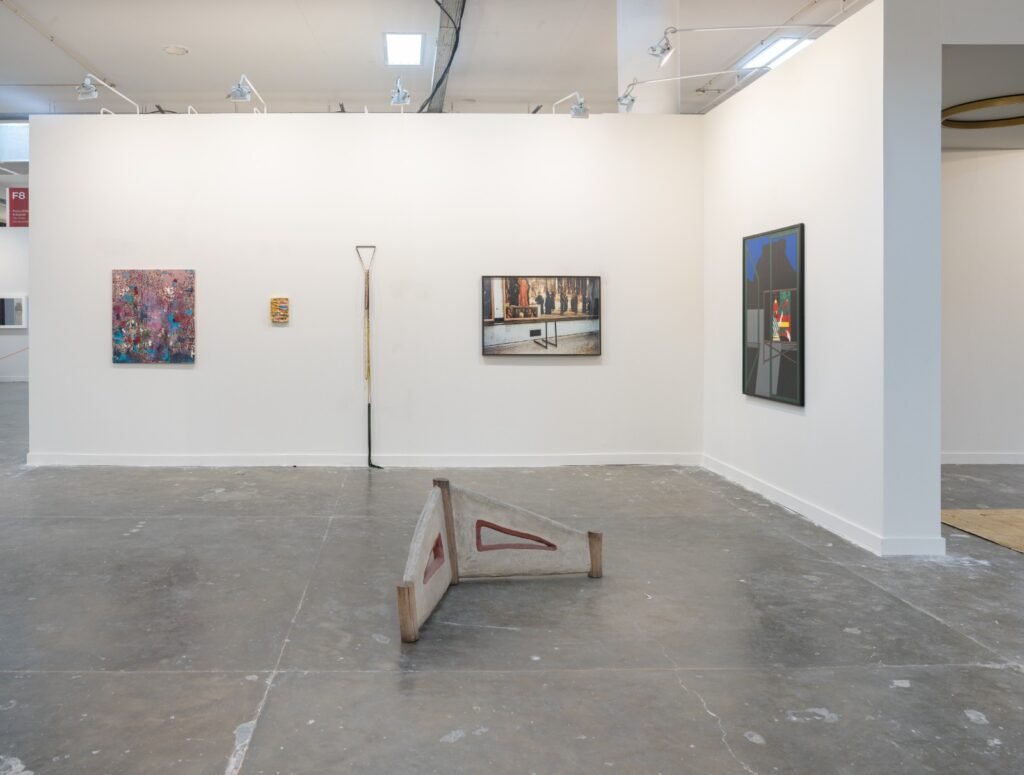
Fortes D’Aloia & Gabriel Gallery’s booth
The gallery reports the sale of the following works during the fair: Ernesto Neto, DançaNós, 2024, for $150.000; Sarah Morris, Jardim Botânico, 2014, for $85.000; Antonio Tarsis, Escudo de Xangô, 2025, for $42.000; Márcia Falcão, Passinho ancestral, 2025, for $35.000; Erika Verzutti, EDM vol. 1, 2025, for $25.000.
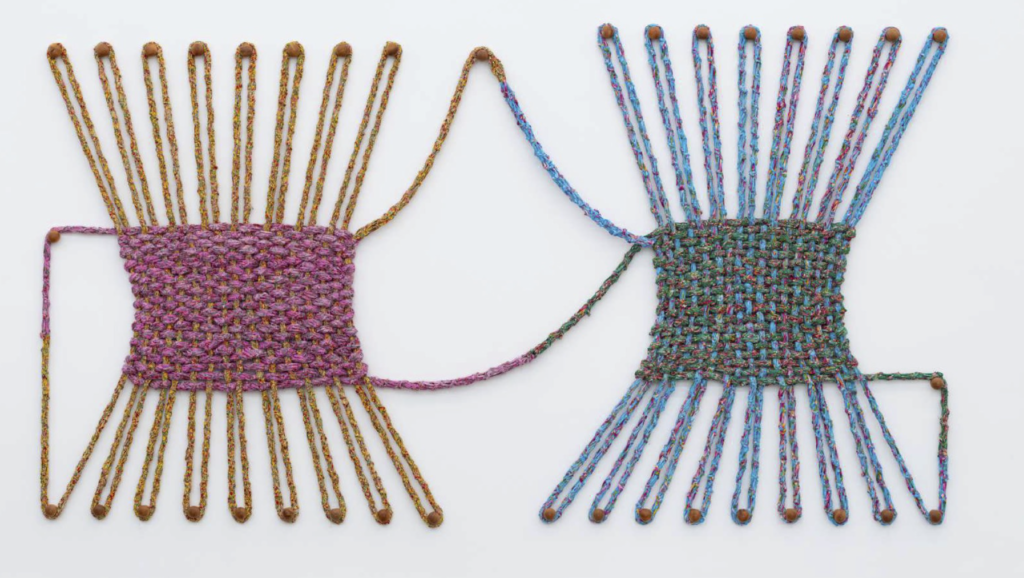
Ernesto Neto
DançaNós, 2024
Cotton fabric weaving and wooden knobs
200 x 420 x 6 cm
Sold: $150.000
Simoēs de Assis
Simões de Assis reported strong results, with all works by Zéh Palito presented at the fair sold. The artist, who recently released a book with ACT, currently has a waiting list of over 100 interested collectors. Two works by Willys de Castro were sold to Brazilian collections.

Simoēs de Assis Gallery’s booth
Thalita Hamaoui‘s paintings also stood out, with acquisitions by collectors from Brazil and Europe. The artist will open her solo show at Marianne Boesky Gallery in New York this May, further consolidating her international presence.
Anita Schwartz
The gallery presents a curatorial selection that spans three generations of Brazilian art. The set includes works by icons such as Abraham Palatnik, productions by artists who stood out in the 1980s and 1990s, such as Nuno Ramos, and creations by the new generation, represented by Bruno Lyfe. The project also features guest artists such as Thiago Rocha Pitta, among others.

Anita Schwartz Gallery’s booth
This year, the top selling artist was Bruno Lyfe, with three works sold. In addition to Bruno, works by artists Antonio Manuel, Duda Moraes, Nathalie Ventura and Ronaldo do Rego Macedo were also sold during the fair.
During the VIP opening of the fair, the artwork Instantâneos (Batata ti), 2002 by artist Cristina Salgado, who participated in the 60th Venice Biennale, was acquired by Iguatemi São Paulo and donated to Pinacoteca de São Paulo through the Work Acquired for the Donation Program.

Cristina Salgado
Untitled, series Instantâneos (Batata ti), 2002
Mixed media
125 x 60 x 60 cm
Sold
Baró
This year, the gallery shone with a powerful curation of national and international names. Among the highlights: Ayako Rokkaku, Citra Sasmita, Joana Vasconcelos, AVAF, Tiago Tebet, Lourival Cuquinha, Luiz Salazar and Néstor García.
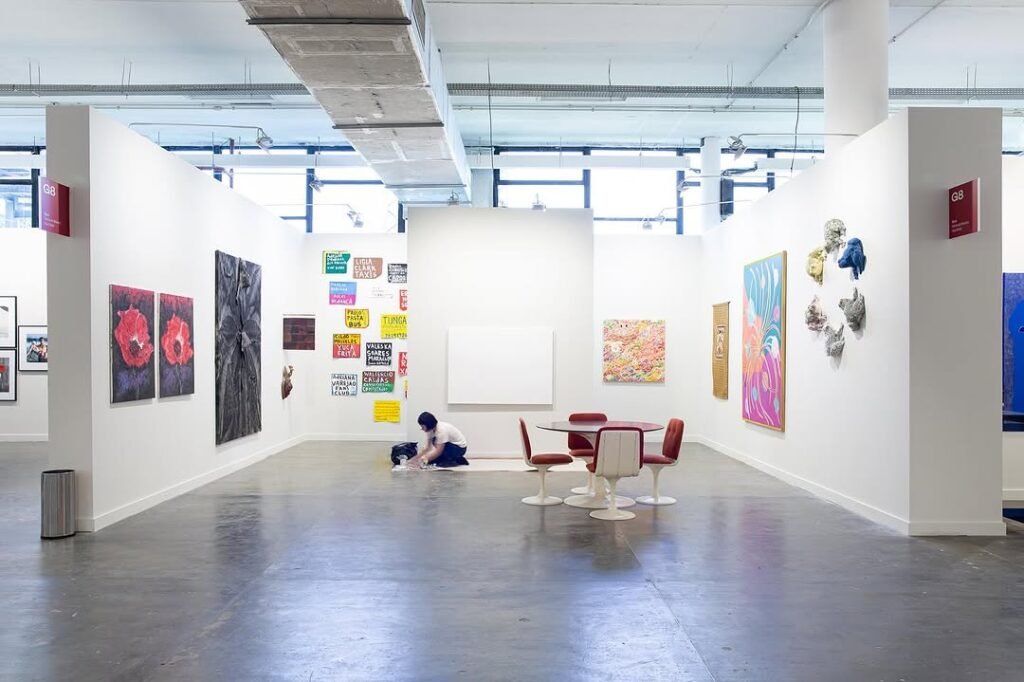
Baró Gallery’s booth
From the very first days, the impact was immediate. Ayako Rokkaku delighted the public with a live performance and had three works sold. Joana Vasconcelos won over collectors with several significant sales and Luiz Salazar had a historic moment: his work Waltercio Caldas consertor de computador is now part of the collection of the Museu de Belas Artes in Rio de Janeiro.

Luiz Salazar
Waltercio Caldas consertor de computador
Sold
Estação
Galeria Estação brought to SP-Arte a selection of rare and unpublished works by historical and contemporary artists, including Lúcia Suanê, Cardosinho, Itamar Julião, Deni Lantz and Renato Rios. During the 2025 edition of SP-Arte, Galeria Estação announced the representation of the estate of the artist Suanê. The first show dedicated to the artist under the gallery’s banner is scheduled to take place between April and July, curated by Ivo Mesquita.
The gallery is also presenting the exhibition Coleção Vilma Eid: Em cada canto, in partnership with Tomie Ohtake Institute, which revisits the collector’s career with works by more than 100 popular, modern and contemporary artists. On view until May 25, 2025, the show offers a rare glimpse into a singular collection built over four decades.

Estação Gallery’s booth view
Notable sales included works by José Bernardo Cardoso Júnior, known as Cardosinho, for R$210.000; Lúcia Suanê for R$150.000; and Deni Lantz for R$65.000.

Cardosinho (José Bernardo Cardoso Júnior)
Untitled, 1931 -1947
Oil on canvas
38 x 61 cm
Sold: R$210.000

Suanê (Lúcia Suanê Carvalho Nóbrega)
Noites de São João em Águas Belas, c. 2000
Oil and metal on canvas
100 x 130 cm
Sold: R$150.000
Raquel Arnaud
The gallery, which celebrated half a century in 2024, reaffirmed its commitment to contemporary art and abstraction. In this edition of the fair, it presented a selection of works by names such as Anna Maria Maiolino, Waltercio Caldas, Carla Chaim and Carlos Cruz-Diez. One of the stand’s highlights was the new series Voadoras, 2024, by Iole de Freitas. Represented by the gallery since 1978, the artist recently took part in exhibitions at Tomie Ohtake Institute and Moreira Salles Institute.
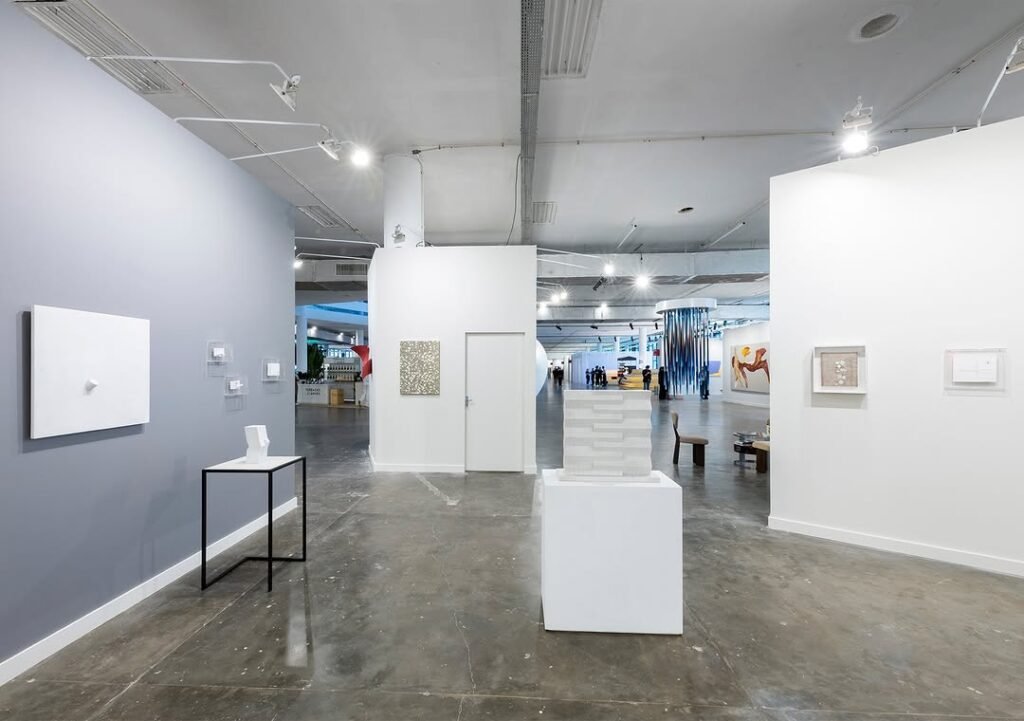
Raquel Arnaud Gallery’s booth view
During the fair, the gallery completed sales of works by Sérgio Camargo and Júlio Villani, while keeping transaction values confidential.
Portas Vilaseca
Portas Vilaseca closed this edition of the fair on a high note. According to the team, sales were steady and spread across various artists — a testament to the strength and diversity of the gallery’s program.
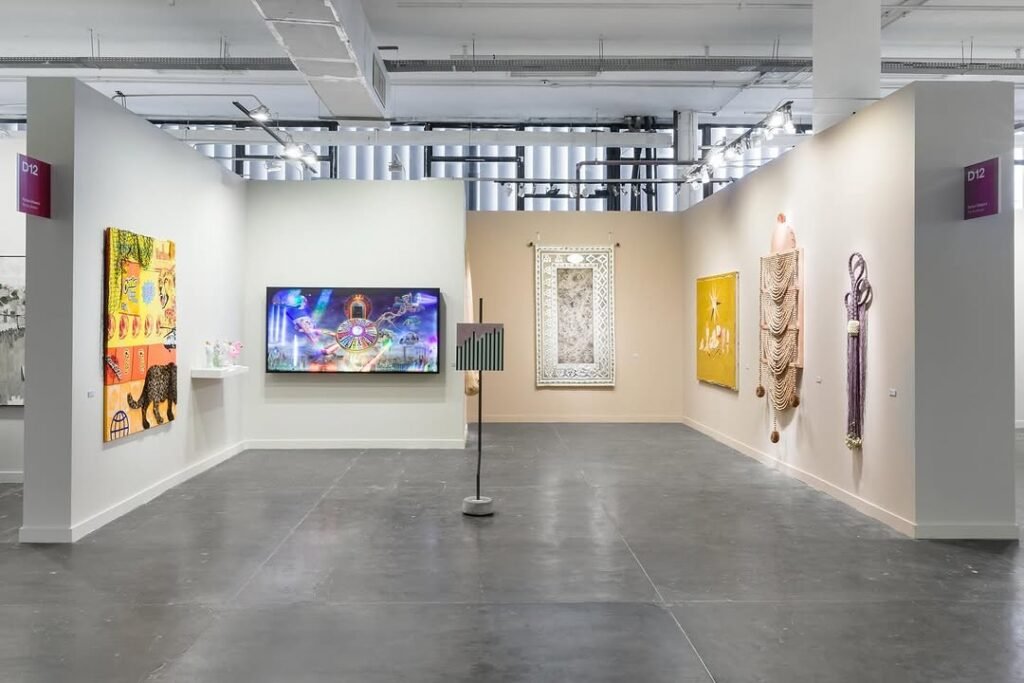
Portas Vilaseca Gallery’s booth
Works by Nádia Taquary, Mano Penalva, Emília Estrada, Zé Carlos Garcia, Guerreiro do Divino Amor, and Cláudia Hersz found new collectors.
Sardenberg
One of the booth’s highlights from the gallery formerly known as Projeto Vênus — now operating under the name Sardenberg was a dedicated room on Wednesday (April 2) and Thursday (April 3) where Adriana Coppio presented her solo show São Bernardo. From Friday to Sunday (April 4–6), the same space featured a solo exhibition by artist Flora Rebollo.

Sardenberg Gallery’s booth
The booth showcased a vibrant mix of artists including Yan Copelli, Felipe Barsuglia, Janaina Wagner, Flora Rebollo, Mirela Cabral, and Adriana Coppio. The gallery reported excellent sales, including the full sell-out of works from Darks Miranda, an artist currently featured at the Mercosul Biennial. Camille Sproesser’s Natural Opera, exhibited at the gallery and during the fair, sold nearly all its pieces.
Inox
The gallery presents works by Brazilian artists Jefferson Medeiros, who explores Afro-Brazilian narratives; Felippe Sabino, who transforms photographs into paintings; and Lívia Moura, who repurposes materials in social and erotic discourses. It also features Uruguayan artists Juanito Conte, known for his strong presence in contemporary painting, and Gustavo Genta, who merges art and architecture, as well as Cuban artist Jorge Mayet, famous for his floating tree sculptures.

Inox Gallery’s booth view
Among the highlights are four works from Jorge Mayet‘s Árvore series, which sold for between R$140.000 and R$160.000. Three of them went to important collections in São Paulo, while one crossed borders to Switzerland, acquired by a European collector.
A work by Gustavo Genta was sold for R$65.000; two large pieces by Lívia Moura were sold for R$60.000 each; two works by Júlio César Aristizábal fetched R$40.000 each; and a piece by Juanito Conte was acquired for R$40.000. All were purchased by collectors from São Paulo.

Jorge Mayet‘
Untitled, 2024
Metal wire, cold porcelain, polyurethane, synthetic fiber and acrylic paint
107 x 86 cm
Sold
Yehudi Hollander Pappi
The recently founded Yehudi Hollander-Pappi gallery is based in a historic house from Flavio De Carvalho, designed between 1936 and 1938. Its artistic program focuses on twenty multimedia artists, with an emphasis on video, performance and painting.

Yehudi Hollander Pappi Gallery’s booth
The first sale at the booth took place with a work by Julia Gallo acquired by Alfredo and Rose Setubal for Pinacoteca. Born in Rio and based in São Paulo, the artist has spent 10 years working with charcoal drawings characterized by a strong sculptural volume. Recently, she has expanded her research into new materials, such as aluminum and bitumen, the latter used in the sold piece.

Julia Gallo
Duas figuras dividindo máscara trágica, 2024
Oil and bitumen on crumpled aluminum
96 x 152 cm
Sold
Lica Pedrosa
Some of the standout names at Lica Pedrosa’s booth for this edition of the fair include Letícia Lampert, Paula Parisot, Marcos Cardoso, Maria Luiza Mazzetto, and Fernando Limberger. Their works reflect the gallery’s strong commitment to diverse artistic practices and powerful visual narratives.

Lica Pedrosa Gallery’s booth
Artist Caio Marcolini had four works acquired, with prices ranging between R$28.000 and R$40.000. Three went to Brazilian collectors, while one was purchased by a collector from Munich.
A Gentil Carioca
Among the highlights of this edition’s sales are works by Agrade Camíz, Pascale Marthine Tayou and Kelton Campos Fausto, acquired by Tate patrons. Kelton‘s work has also been included in important international collections, such as that of a private museum in Germany. In addition, works have been included in Paz Institute Collection.

A Gentil Carioca Gallery’s booth
The gallery is also celebrating the participation of Agrade Camíz, Vinicius Gerheim and Laura Lima in Saison Brésil-France in June. With Agrade and Vinicius signing site-specific works for Grand Palais, while Laura Lima presents an installation at Panthéon in Paris.
Cerrado
Representing Brazil’s Central-West region, the gallery presents a compelling lineup that includes acclaimed artist Simon Franco, whose monumental 2.5 x 5-meter work explores themes of immigration. Also featured are rising stars such as Raio Tamparda, Virgílio Neto, Manuela Costa Silva, and Valter Pimentel, alongside the vibrant and detailed works of Marcela Cantuária.

Cerrado Gallery’s booth view
The gallery reports strong sales momentum during the VIP opening, driven by an active presence of collectors and buyers.
Zielinsky
The gallery celebrated important institutional achievements this year by placing a work by Vera Chaves Barcellos in the permanent collection of Barcelona Museum of Contemporary Art (MACBA). They also held exhibitions at the prestigious Museo Nacional Centro de Arte Reina Sofia in Madrid, reinforcing the international projection of his curatorial program.
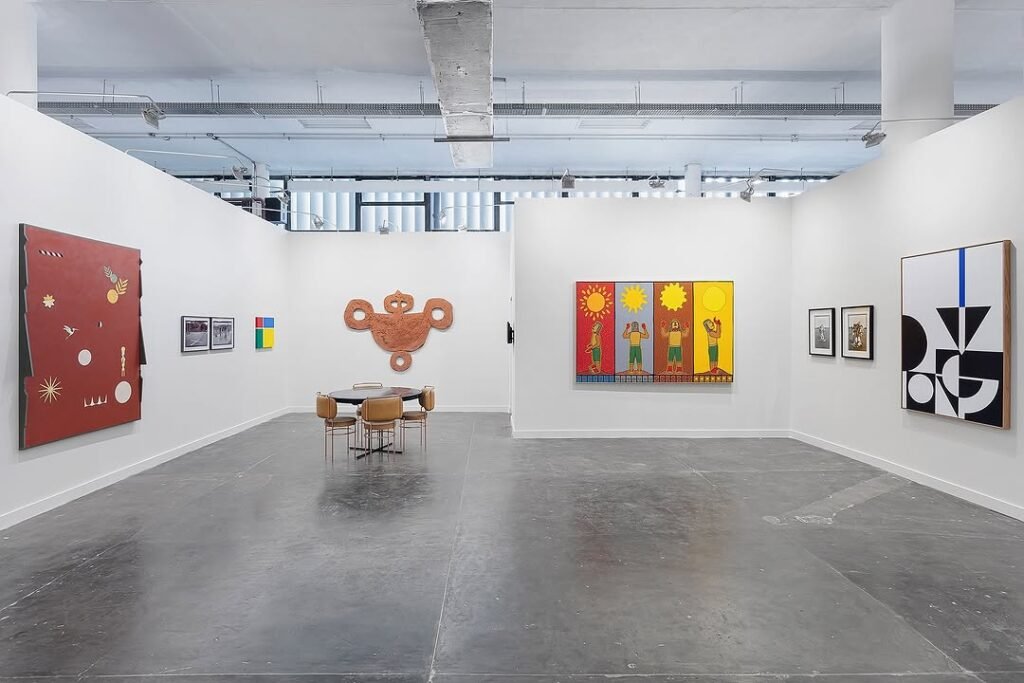
Zielinsky Gallery’s booth
Luciana Brito
Luciana Brito Galeria is presenting a series of works that explore painting as an expanded field, with a focus on Latin American artists. Highlights include Delson Uchôa, Gabriela Machado, Fernando Zarif and the Campana Studio, with drawings by Humberto Campana, among others.
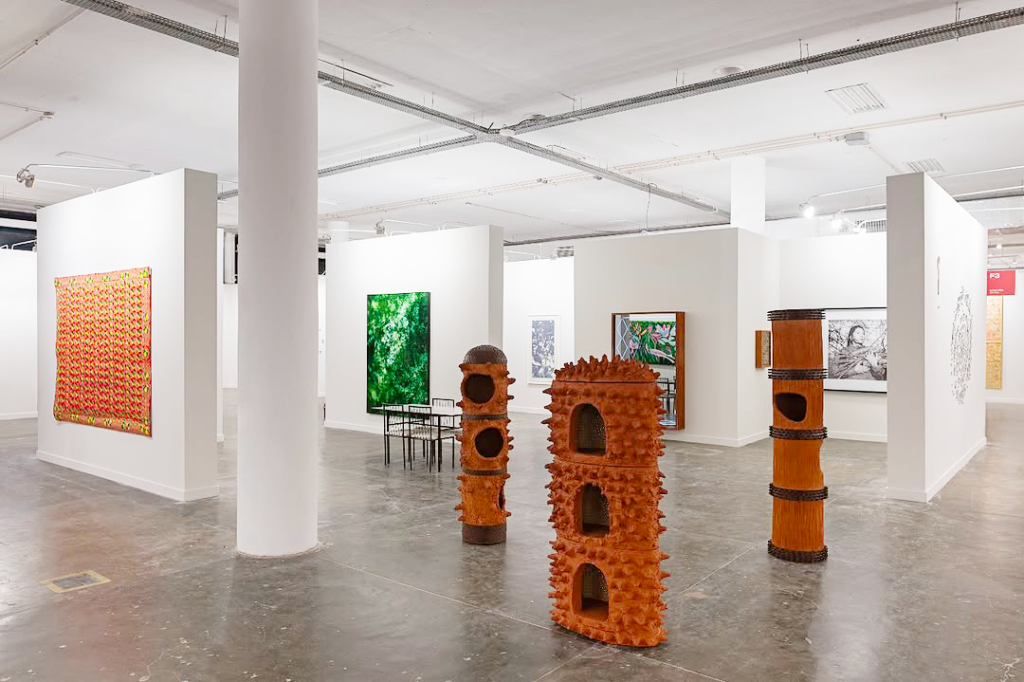
Luciana Brito Gallery’s booth
Design Projects
Present at SP–Arte since 2016, the Design sector continues to evolve and expand with each edition. According to the organizers, the goal is to strike a balance between innovation and tradition, showcasing works that project the future while honoring the heritage of Brazilian design.
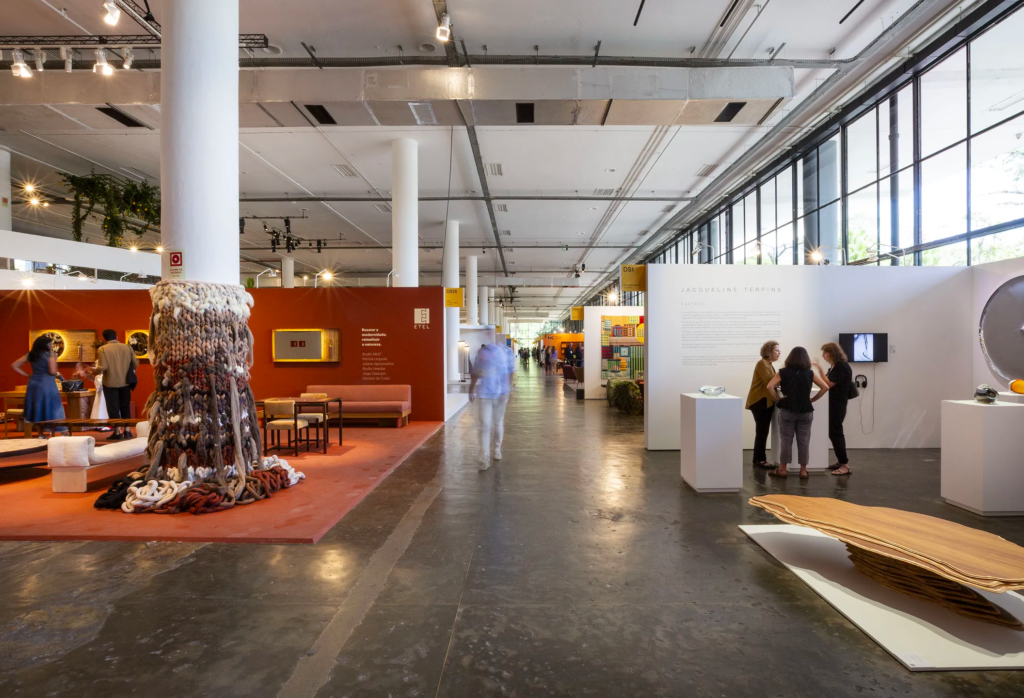
Overview of the Design Sector
In 2025, the sector grew from 71 to 81 galleries and studios among the fair’s 300 exhibitors, reflecting a steady rise in interest and participation. Yet, despite this growth, several gallerists have pointed out that navigating the Design section has become increasingly challenging. The expanding presence of industrial design firms—often occupying the largest booths—has started to overshadow vintage and authorial design. Instead of being distinctly curated, these segments are now dispersed throughout a broader mix, making it harder for collectors to grasp a cohesive curatorial narrative. Over time, this lack of clarity risks reducing both the visibility and the market impact of these more specialized practices.
I. Design Vintage Galleries
Artemobilia
One of the most emblematic pieces on display is the Chaise Rio, designed by Oscar Niemeyer and used by himself before being gifted in the 1980s to the architect Oswaldo Bratke – a central figure in São Paulo modernism.

Artemobilia Gallery’s booth
More than an iconic piece of furniture, the Chaise Rio reflects Niemeyer’s poetics: curves that evoke Rio de Janeiro and feminine forms, in a synthesis of beauty, symbolism and history. A rare piece that reflects the master’s sensitivity.
Regarding sales, the gallery celebrated the placement of a pair of Pilão armchair’s by José Zanine Caldas, one of the great masters of Brazilian design.

José Zanine Caldas
Pilão chair, c. 1975
Pequi
81 × 74 cm
Sold: R$80.000 each
Teo
Curated by Francesco Perrotta-Bosch, Galeria Teo is presenting the exhibition Scapinelli and his slender elements, dedicated to the timeless elegance of the Italian-Brazilian designer.

Teo Gallery’s booth
The booth project invites visitors to discover, in every line and finish, the sculptural essence of Giuseppe Scapinelli’s furniture — a master of form who transformed functionality into visual poetry. Among the highlights, the gallery reported the sale of an open shelving unit for $38.000, a coiffeuse ensemble for $40.000, a striking triangular dining table.

Giuseppe Scapinelli
Coiffeuse set with mirror, chair and sideboard
Sold: R$40.000
Apartamento 61
The gallery proposes a dialog between design, art and sustainability, with iconic furniture, contemporary creations and sculptures made from plastic waste by Pirilampos do Planeta. Photographs by Tinko Czetwertynski complete the stand, celebrating the beauty of Brazil’s vernacular spaces.

Apartamento 61 Gallery’s booth
The iconic chess set signed by Aurelio Martinez Flores, one of the great names in 20th-century Brazilian design, was sold.
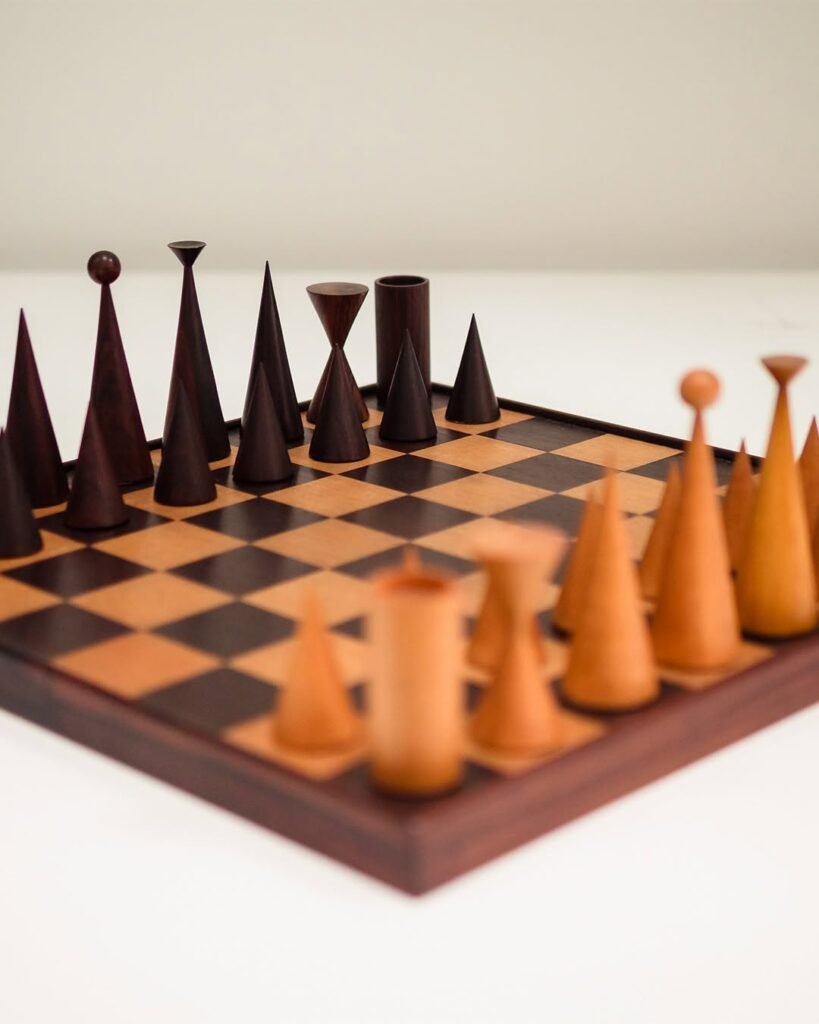
Aurelio Martinez Flores
Conjunto de xadrex
Sold: R$32.000
Herança Cultural
Featuring pieces by Sergio Rodrigues, Jorge Zalszupin, the Campana Brothers, Oscar Niemeyer, and other major names, the gallery presents a curated selection that blends vintage and contemporary design. Highlights include the original structure of the iconic Mole armchair by Sergio Rodrigues and an early edition of the Boa sofa by the Campana Brothers, dating back to the time of its creation.

Herança Cultural Gallery’s booth
Passado Composto
Curated by Alejandra Muñoz, the gallery is presenting the exhibition Jorge Cravo Melodias das Tramas, featuring tapestries and drawings by the Bahian artist Aminthas Jorge Cravo, or Cravinho, whose work translates musicality into colors and shapes.
The highlight at Passado Composto is an impressive Danish table, commissioned by then-US President Jimmy Carter for one of the White House meeting rooms. Divided into three parts, which can form different compositions, the piece seats more than 20 people, and according to the gallery owner, it’s one of the best pieces in her collection to date.

Passado Composto Gallery’s booth
Lora Ronco
Combining sophistication, functionality and a tropical soul, Lora Ronco is bringing a careful selection of modern Brazilian furniture to the fair, with original pieces from the 1950s, 60s and 70s.
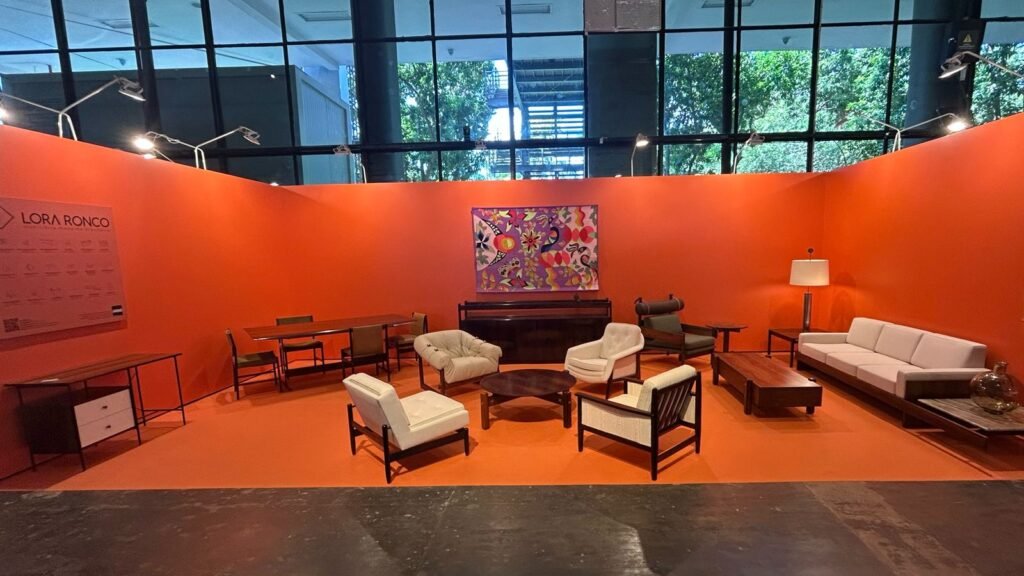
Lora Ronco Gallery’s booth
The collection brings together creations signed by great names in Brazilian design, such as Sérgio Rodrigues, Jorge Zalszupin, Percival Lafer, Ernesto Hauner, Jorge Jabour Mauad, as well as pieces by Celina Decorações and Kennedy Bahia.
II. Contemporary Designers
Designers Group
Curated by Ana Scheuer and Neto Tavares, the exhibition explores dialogues between contemporary languages, materials, and poetics. It brings together works by Bettina Heuer, Clemilson Saints, Eduardo Montani, Felipe Rezende, Gustavo Dias, Luisa Attab, Maximiliano Crovato, Rodrigo Zampol, and Simone Coste.

Designers Group Gallery’s booth
The work in the Ragisména series by Rodrigo Zampol – whose title, from the Greek, means “cracked” – was sold at the fair. Using craft techniques such as metal casting, the artist explores textures and surfaces that evoke fissures, memories and mythologies.

Rodrigo Zampol
Ragisména series
Stool and side table in cast bronze
Photo: André Klotz
Sold: R$96.300
Nicole Toldi
Driven by an unrelenting desire to create, Nicole and Luiza Toldi developed the PULSO collection — a visceral body of work composed of sculptures made from fragments of previous collections. Immersed in a raw and rhythmic process of free experimentation, the duo poses a vital question: What makes you pulse?
Nicole has already reported the sale of several pieces from the collection, marking a promising response to its emotional and material resonance.

Nicle Toldi Gallery’s booth
Inteligencia Material
On the first floor of the Bienal Pavilion, visitors will be able to see the exhibition Inteligencia Material, curated by Livia Debbane and Camilo Oliveira. The show brings together pieces created by young Brazilian and Latin American designers and proposes a reflection on the active role of materials in the creative process. “The empirical process shows the designer that there is no hierarchy, predictability or consensus in their contact with material intelligences,” say the curators.
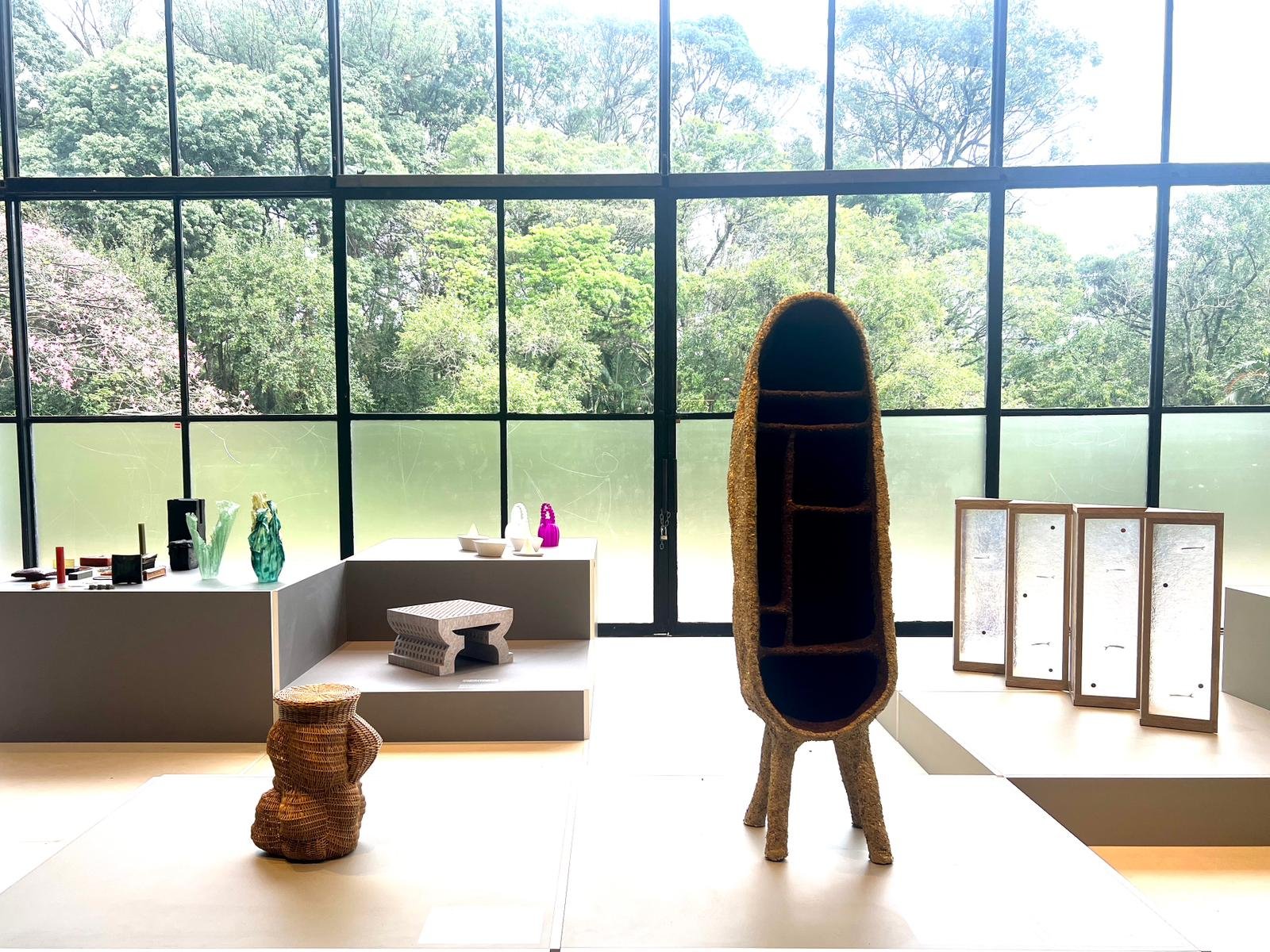
Overview of the Inteligencia Material
Granistone
In partnership with Rodrigo Ohtake, Granistone presents creations that explore new forms and expressions of natural stone. This collaboration blends original design with technical innovation, revealing the sculptural and sensory potential of materials shaped by nature.

Granistone booth
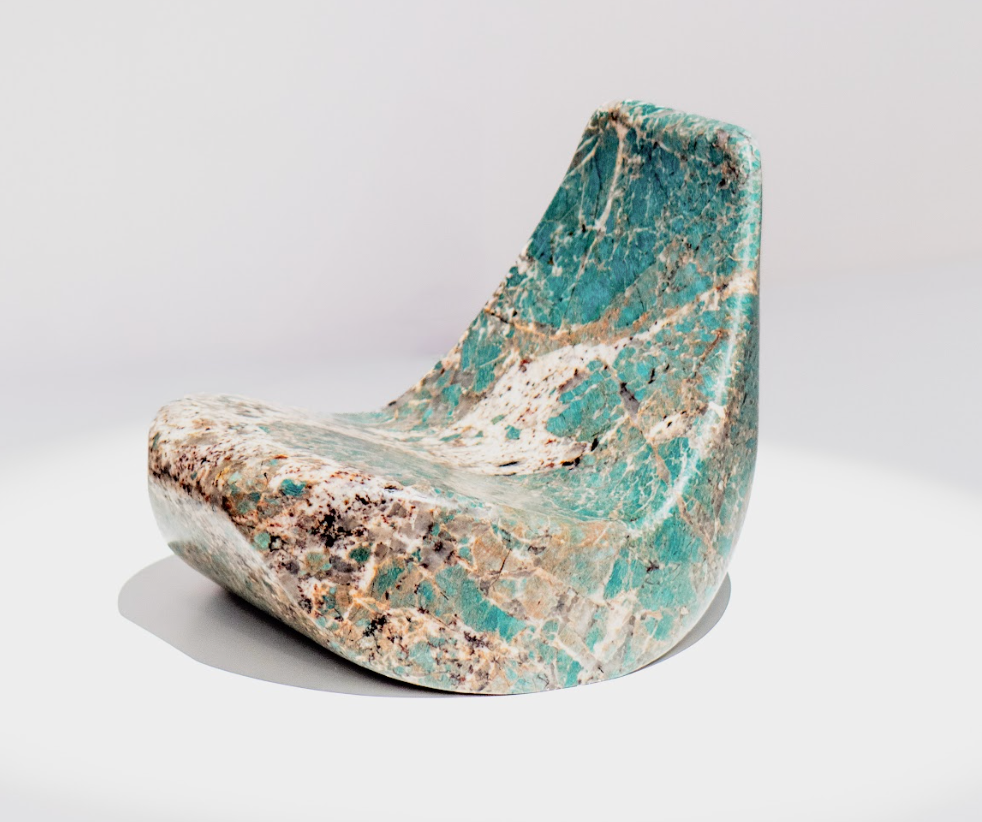
Chair carved from a single block of amazonite, mined in Paraíba
SP-Arte Awards
During this edition, SP–Arte joined forces with Artefacto, Arauco, and Sauer to spotlight the names shaping the future of art and design in Brazil. Three prizes were awarded—two in the Design sector and one in the Visual Arts—each celebrating creativity, innovation, and impact.
Erik Bonissato, founder of Bonni, received the Artefacto SP–Arte Prize for Best Design. The award comes with two major opportunities: a trip to Art Basel Miami Beach in 2025 and a guaranteed booth at SP–Arte 2026. A significant step forward for a designer who sees design as experience.

Bonni‘s booth
The design studio Assimply was awarded the Arauco SP–Arte Innovation and Sustainability Prize. Their proposal stood out for blending aesthetics, function, and environmental awareness. The team will head to the Salone del Mobile in Milan in 2026, sponsored by Arauco, and will also exhibit at SP–Arte 2026.

Assimply‘s booth
In the Visual Arts category, the Sauer Art Prize—dedicated to emerging talents—was awarded to Mayara Ferrão. Selected by a jury including Germano Dushá, Marina Simão, Maguy Etlin, Fernanda Feitosa, and Stephanie Wenk, her powerful and poetic work stood out. The artist receives a R$25.000 cash prize, a meaningful boost to continue her artistic journey.
SP–Arte 2025: Market Hesitation Meets Cultural Resilience
Despite ongoing market headwinds, SP–Arte 2025 reaffirmed its position as a key barometer of Latin America’s art market. Figures from previous editions underscore its commercial importance: in 2023, 35% of participating galleries sold nearly 900 works, with 53% priced under R$50.000 — a sweet spot for emerging collectors. At the top end of the spectrum, works priced above R$1M represented 4% of total sales, signaling the fair’s ability to draw serious investors. In 2024, the momentum continued, with leading galleries reporting revenue growth of 30% to 100%, according to a Folha de S. Paulo survey.
This year, however, caution crept back in. The ongoing absence of tax exemptions continues to discourage the participation of some international galleries, leading many — such as Continua — to collaborate with local dealers like Marli Matsumoto to maintain a presence. Compounding this was economic turbulence triggered by developments in the U.S. during the fair week, which further cooled an already tentative market. Sales mostly clustered between R$10.000 and R$100.000, while overall volume declined. The secondary market and blue-chip masterpieces were particularly affected. Several galleries that traditionally focused on multimillion-dollar works had already adjusted their strategies, offering more accessible contemporary pieces in their 2025 selections.
The design sector — often a standout in recent editions — was among the hardest hit by this sudden market contraction, with notably fewer sales recorded.
Still, SP–Arte’s cultural significance remains undiminished. In uncertain times, the fair continues to be a vital platform for artistic innovation, international exchange, and visibility — reaffirming its role not just as a marketplace, but as a cornerstone of Brazil’s contemporary art ecosystem.
Sophie Su Art Advisory was actively involved in key transactions during the fair and closely followed several negotiations that shaped this year’s edition. Get exclusive behind-the-scenes insights in our SP–Arte 2025 report, essential reading for those who want to stay ahead of the market.
For further information or private advisory, feel free to reach out directly via WhatsApp.